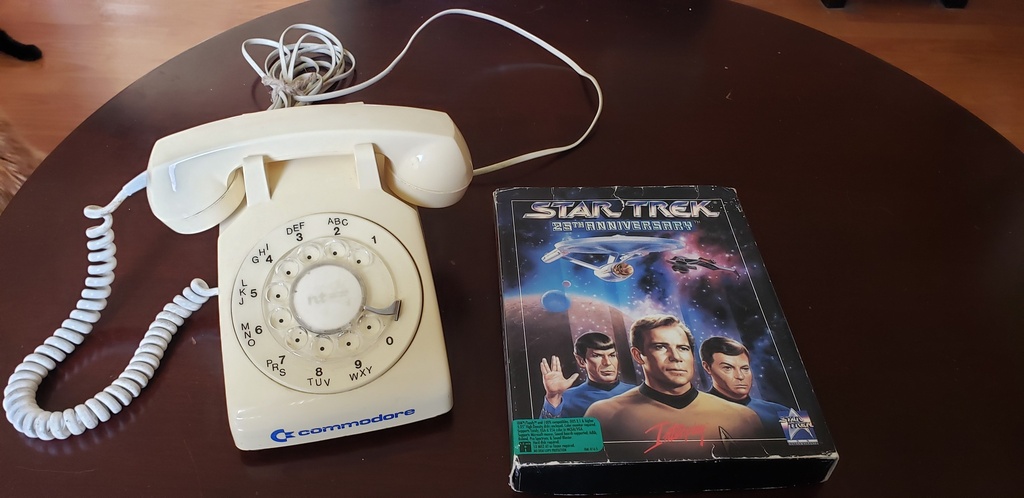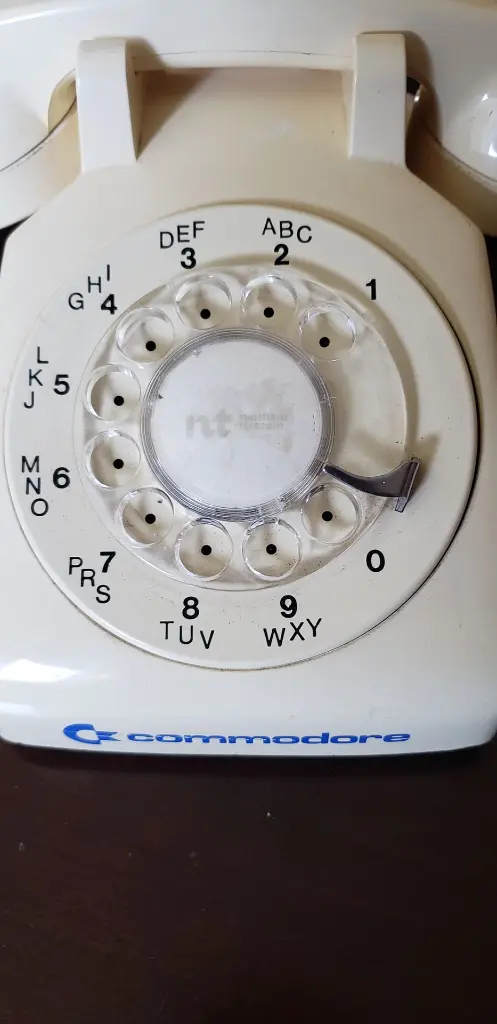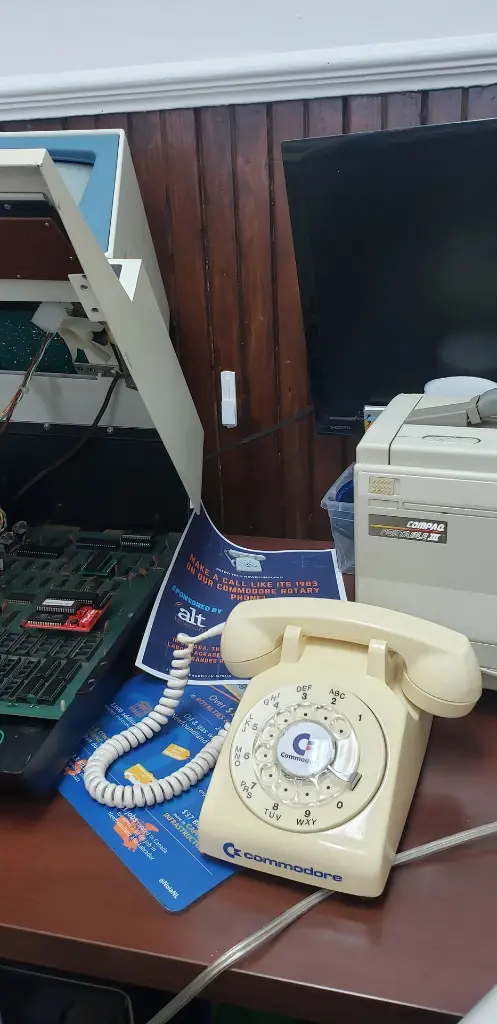Commodore Rotary Phone
The rotary dial is a fascinating piece of telecommunication history. Let’s explore more about it:
- Signaling Technology: A rotary dial is a component of a telephone or a telephone switchboard that implements a signaling technology known as pulse dialing. When initiating a telephone call, it transmits the destination telephone number to a telephone exchange.
- Circular Layout: On the rotary dial, the digits are arranged in a circular layout. Each digit corresponds to a finger hole in the dial wheel.
- Dialing Process: To dial a digit, the user rotates the wheel against spring tension with one finger positioned in the corresponding hole. The wheel stops at a mechanical barrier (the finger stop). When released, the wheel returns to its home position, generating electrical pulses on the telephone line. Each digit is encoded in sequences of pulses, making it a digital addressing system.
- Decadic Dialing: The method is sometimes called decadic dialing. The average baud rate is 10 bits per second, and variations in the rotary dial mechanism’s governor speed allow for approximately 9 to 13 pulses per second.
- First Patent: The first patent for a rotary dial was granted to Almon Brown Strowger in 1892, although the commonly known form with holes in the finger wheel wasn’t introduced until around 1904.
- Bell System Adoption: While rotary dial service was common in independent telephone companies, it wasn’t widespread in the Bell System in the United States until the early 1920s.
- Transition to Touch-Tone: From the 1960s onward, the rotary dial gradually gave way to DTMF (dual-tone multi-frequency) push-button dialing, introduced to the public as “Touch-Tone” at the 1962 World’s Fair.
In summary, the rotary dial phone played a crucial role in connecting people for decades, and its distinctive circular dial remains an iconic symbol of communication history.





